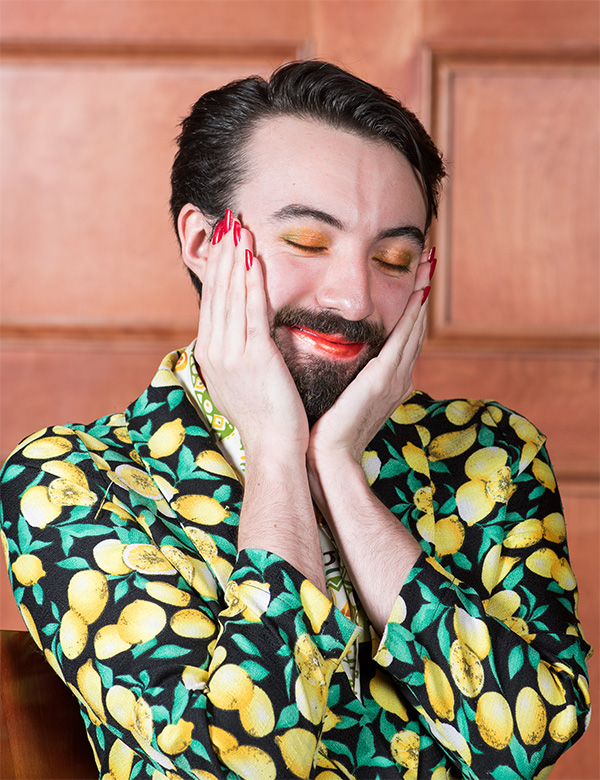
Séamus
Gallagher
B. 1995
Kjipuktuk (Halifax), NS
A Slippery Place (2019)
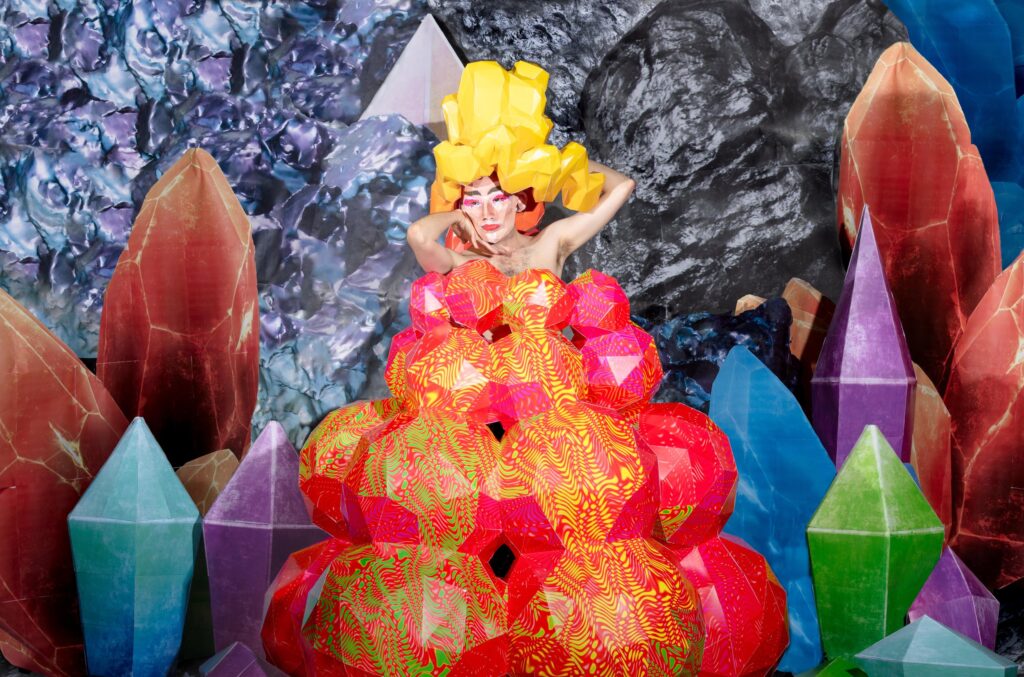
A Slippery Place 1 (2019)
Photo-Tex print, 40” x 60”
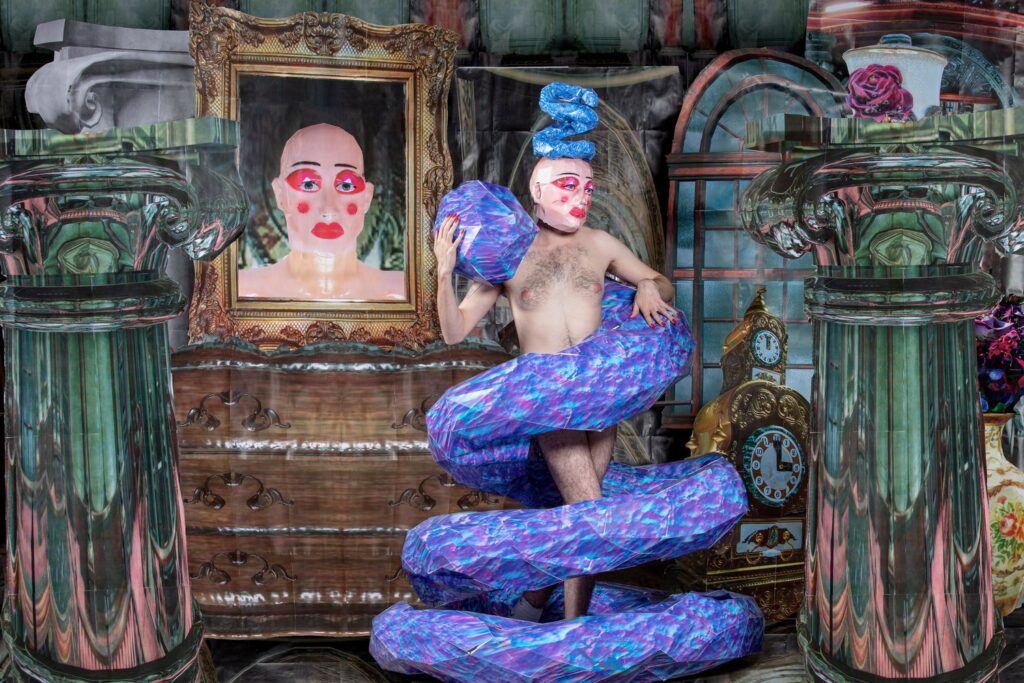
A Slippery Place 2 (2019)
Photo-Tex print, 40” x 60”
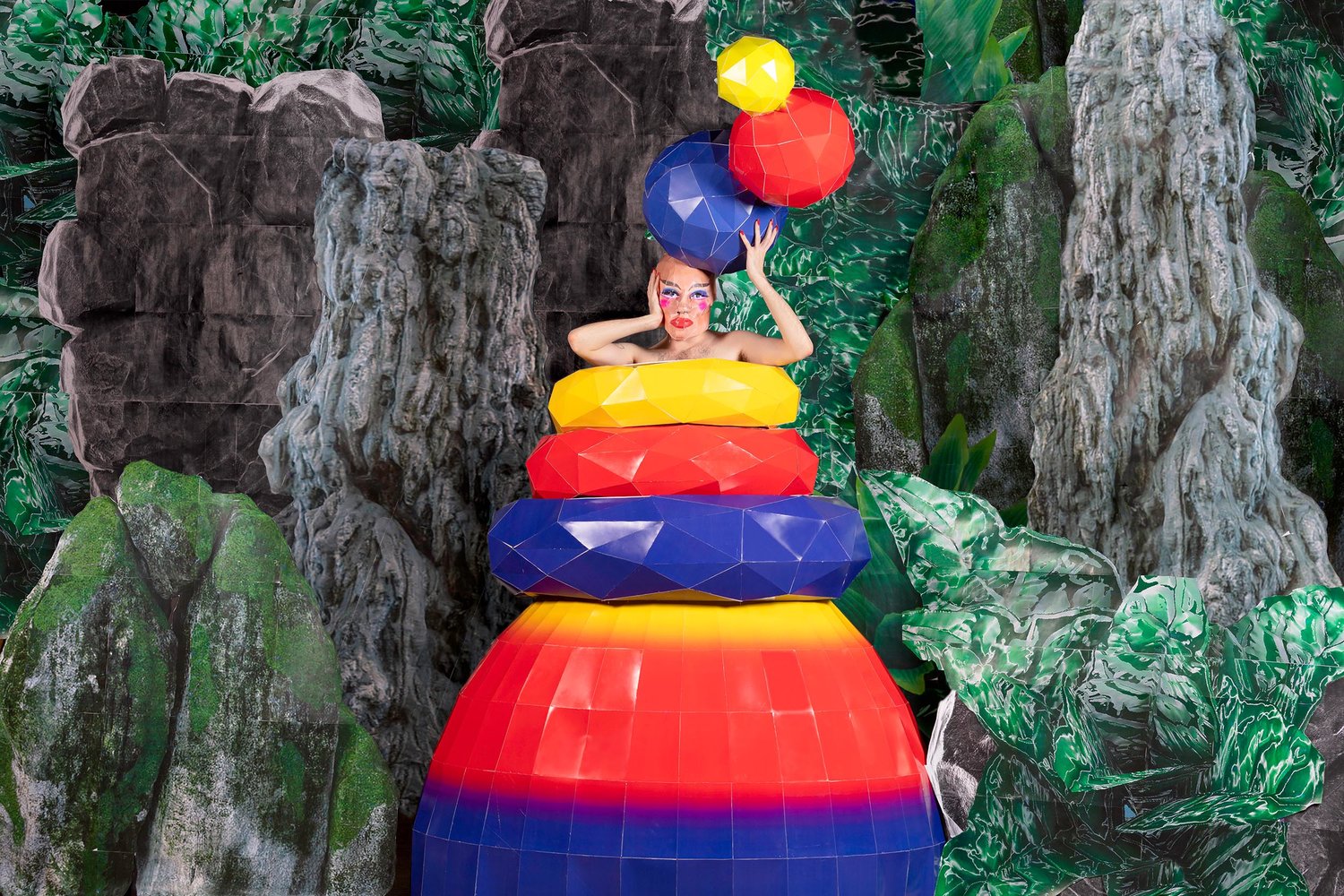
A Slippery Place 3 (2019)
Photo-Tex print, 40” x 60”
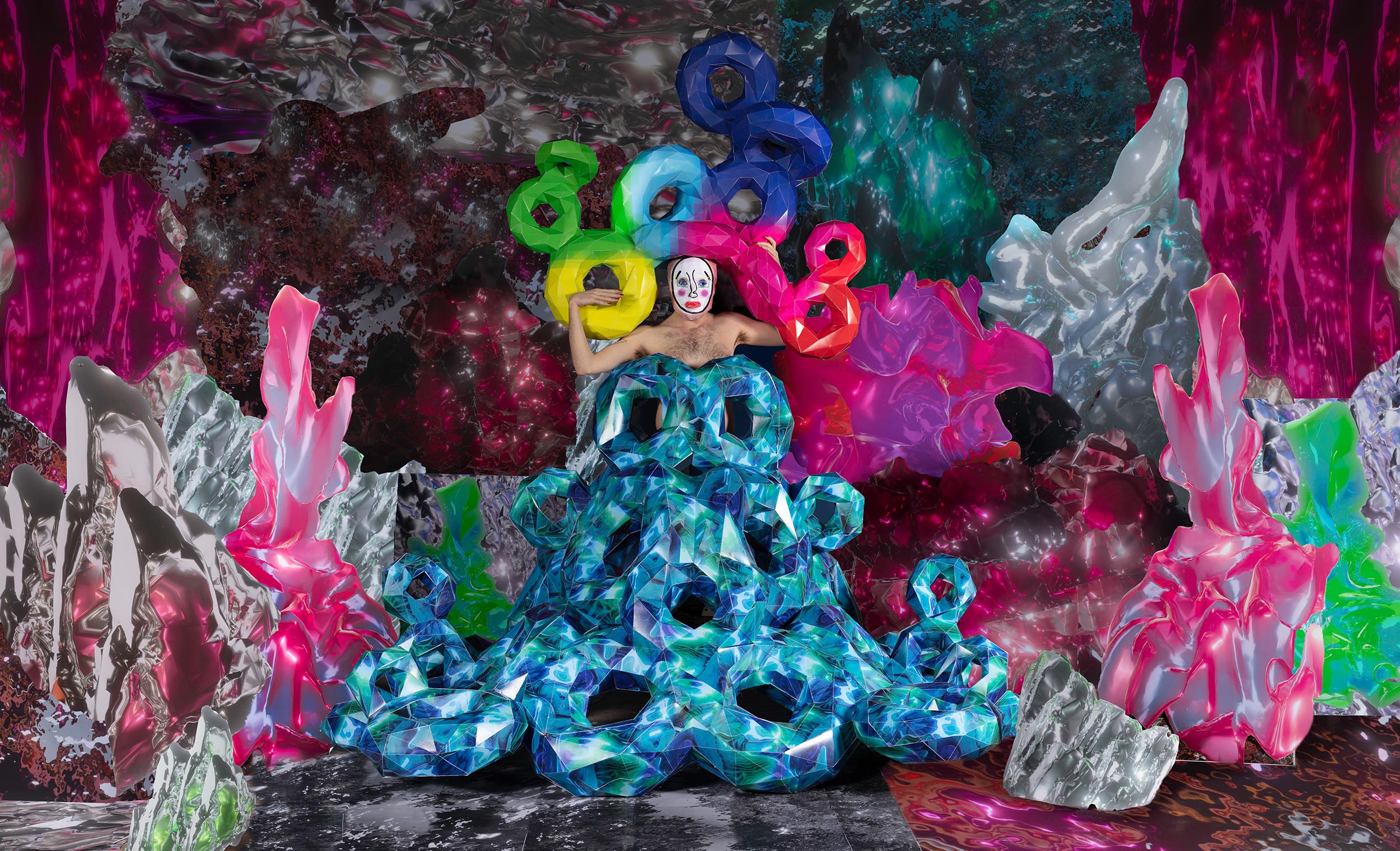
A Slippery Place 4 (2019)
Photo-Tex print, 40” x 60”
Stuck Aesthetics
by Jon Davies
Shaka McGlotten’s book, Virtual Intimacies, describes how mediated spaces of connection like hookup apps and multiplayer video games are not only “virtual” in existing in digital space, but also in terms of being seen as inferior and lacking compared to the supposed authenticity of experience available in “the real world.” McGlotten generatively shifts the conversation by suggesting that much of what we consider intimacy is itself “virtual,” never totally fulfilled and existing in potentiality and fantasy rather than something concretely tangible in the world.
What Séamus Gallagher calls A Slippery Place animates this unstable terrain of the virtual. Drawing on drag, Gallagher created 3D models of outfits and environments in a program called Pepakura that were printed on paper, sculpted and hot-glued into shape. With Gallagher as model, the rigid yet fragile paper costumes appear constricting and demobilizing. While the digital promises speed and fluidity, the transformation of code into crude DIY physicality deflates these techno-aspirations. Instead, like a glitch, the figure appears “stuck” in the ground. This avatar, while open to gendered and other kinds of self-fashioning, is doomed to pose this way forever. The artist’s body seems caught partway through a mutation from carbon-based flesh to silicon-based fabrication, with the printed paper masks they wear frozen in uncanny grimaces. And yet, I’m seduced by this world’s dazzling colour palette…
I think of the globalized RuPaul’s Drag Race industrial complex and how young queens now grow up with a “virtualized” knowledge of drag gleaned largely from social media and the TV show itself, a dolled-up Ouroboros. Performing to the camera — for Instagram, for the fans watching in HD — crafts a desirable image and brand. But Gallagher’s cut-and-paste fantasia, precisely in its stiffness and “failure,” seems to offer the possibility of new aesthetic pleasures and embodiments in being an image.
BIOGRAPHIES/CONTACT
Séamus Gallagher is a non-binary photo and virtual reality artist currently based in K’jipuktuk (Halifax, Nova Scotia). They recently graduated from NSCAD University with a double major in Photography and Expanded Media (BFA 2019). Their work has shown in festivals/exhibitions across Canada, as well as in Germany, England, Switzerland and Los Angeles. They are the recipient of the 2017 AGO | AIMIA Photography Scholarship, the 2018 NSCAD Student Awards, and the 2019 BMO 1st Art! Awards. They were also recently longlisted for the 2019 and 2021 Scotiabank New Generation Photography Awards.
Find more info about Séamus’ work on their website, and follow them on Instagram here.
Jon Davies is a Montreal-born curator, writer, and PhD Candidate in Art History at Stanford University. Between 2008–12, his curated retrospective People Like Us: The Gossip of Colin Campbell toured across Canada. In 2011–12, he curated the queer group exhibition Coming After while working as Assistant Curator at The Power Plant Contemporary Art Gallery, Toronto. His book Trash: A Queer Film Classic about the Paul Morrissey film was published in 2009. His edited anthology More Voice-Over: Colin Campbell Writings will be published by Concordia University Press in 2021.
DOWNLOAD EXHIBITION TEXTS
Each artist was invited to choose a writer to respond to their work included in the exhibition, or in a few cases, the curator suggested a writer for them. All of these collected essays can be downloaded as a PDF document here.
* PHOTO OF SEAMUS GALLAGHER: Katie Nakaska
External Links
A CBC profile of then-NSCAD student Séamus Gallagher, and their work creating paper installations and 3D drag personas using video game technologies.
Video produced by Dave Culligan and Gavin Hatheway.
